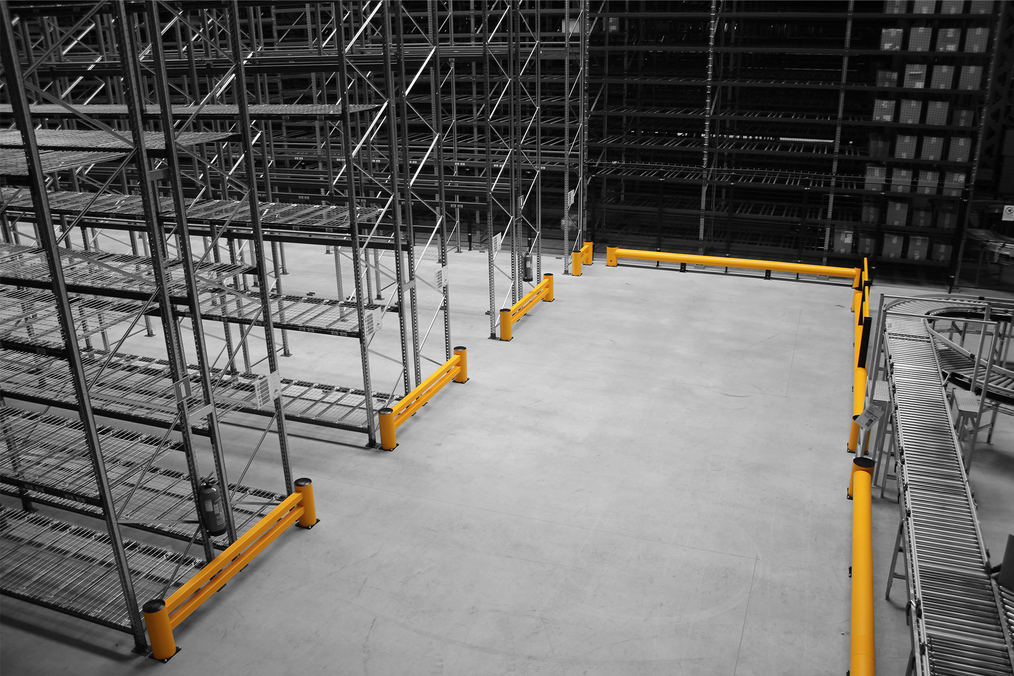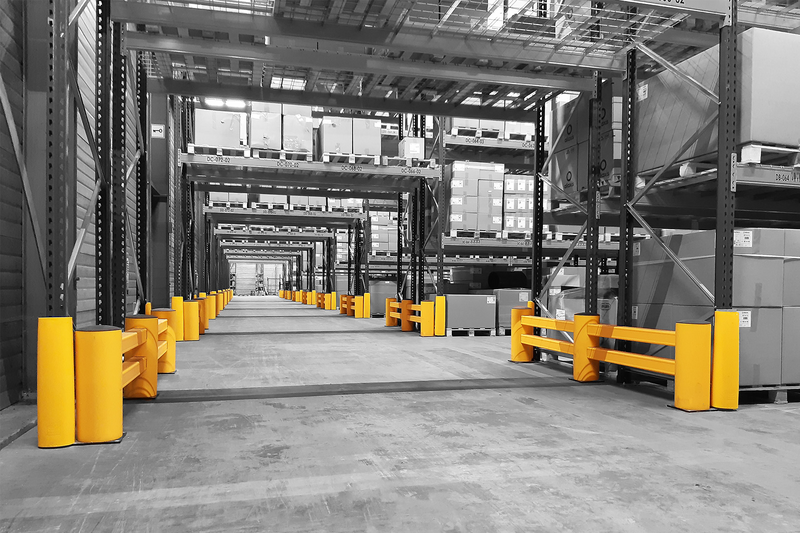Is your warehouse prepared for inspection?
Gone are the days when workplace safety depended solely on your own rules and regulations. Today, stringent safety regulations exist both nationally and internationally. Multiple agencies conduct regular inspections to uphold and enforce these regulations. It's crucial to be well-prepared for these inspections. Here are some tips to improve forklift traffic safety in your warehouses.

Safety tips for warehouses with forklift operations
Forklift pathways
Forklift pathways must be wide enough and clearly marked. You can achieve this with floor marking tape. Alternatively, you can install polymer safety barriers for added protection. A physical boundary is the most reliable safety measure. You can use a variety of safety solutions: barriers, handrails, and safety gates all help create safe aisles for forklifts.
A polymer handrail serves as an excellent example of an effective barrier. It is lightweight, flexible, and highly visible. It is quick and easy to install in various warehouse areas. Handrails are an effective way to safely direct pedestrian traffic, as they are high enough to prevent people from stepping over them.
Safety gates make it easy and safe for warehouse staff to transition between zones. The gate prompts workers to stop and think before entering an area where forklifts operate. You can install safety gates that slide, swing, or open vertically, depending on the space and circumstances.
Installing mirrors to cover blind spots is also a good idea.
What are the stacking procedures in your warehouse?
Everyone must know the correct stacking procedures to prevent accidents. Consistent and proper stacking is essential. Storing goods securely prevents them from tipping and falling. Ensure everyone has easy access to clear and simple stacking procedures.
Discover here how to better organize your warehouse.
Properly position your forklifts
The same principle is true for forklifts as to other tools: "A place for everything, and everything in its place." A clean workplace also enhances safety. What should you be aware of?
- Determine where the forklifts are refueled or charged. This ensures forklifts are ready when employees begin their workday.
- Install the necessary signs and ensure sufficient lighting.
- Use safety barriers to protect infrastructure, pedestrians, buildings, and forklifts from collisions. Polymer safety barriers are ideal for this purpose.
Learn about the numerous benefits of polymer safety barriers in our white paper.
Well-trained forklift operators significantly reduce accidents
The cab of a forklift is restricted to those who have completed the official training. Proper training is literally a matter of life and death. Forklift training involves regular refresher sessions. These sessions keep drivers focused on the dangers of operating a forklift. Drivers can then share their knowledge with other staff, increasing awareness of forklift hazards.
If you want to explore additional measures to prevent forklift accidents, check out our checklist!
Conduct a risk assessment and develop a traffic plan
Does your organization have a risk assessment and traffic plan available? A risk assessment documents all the risks, and a traffic plan shows the company's traffic flows and intersections. Use these plans to install signs and polymer safety barriers that meet all industry standards.
Need tips on how to perform a risk assessment? Or not sure how to develop a traffic plan? We're here to help.
Rack Inspections
The condition of your infrastructure is crucial. This is especially true for your storage racks. Can they bear the load? Do they need replacement? Are they protected from impacts by pallet trucks or forklifts? Collisions can have serious consequences. Preventive protection measures like safety barriers, bollards, or rack protection are advisable.
Is it time to critically evaluate your working environment?
Is it time to critically evaluate your working environment? If your company has a safety manager, don't hesitate to seek their assistance. Their expertise makes them the primary contact for workplace safety and will provide a clear understanding of the risks your employees face.
